Revit doesn’t have the table as an annotation tool. Revit users have been dealing with this using different workarounds. They created a table using text and detail lines. Sometimes they created the table in an AutoCAD drawing then reference it in the Revit view or sheet. I don’t like any of those methods. They are not practical and takes a lot of time.
My preferred method is using Schedule Key. A schedule key works like any other schedule. You can change the font style and resize the column. It is more comfortable than using text or linking an AutoCAD file.
Creating a Key Schedule
Creating a Key schedule is similar to creating any other schedule. The difference is, the data is not related to elements in the model. You can add rows and columns as many as you need without needing to place elements.
To Create a Key Schedule
The process to create the Key Schedule is similar. In the Revit Ribbon, View tab, Create panel, click Schedules> Schedule/Quantities.
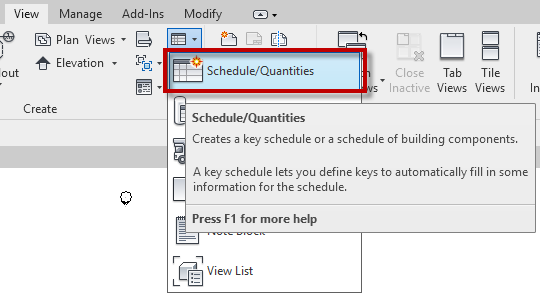
For the schedule category, select a category that you don’t use for that particular project. We want to avoid having too many parameters when creating a new schedule. For this example, I use Topography schedule.
For the schedule type, change it to Schedule keys. Rename the schedule as necessary.
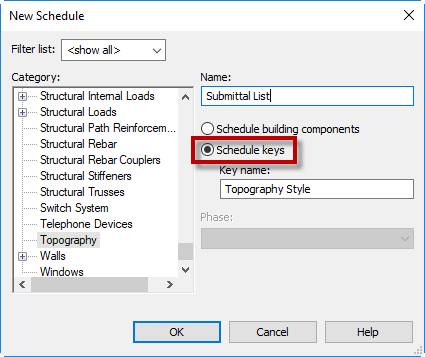
To Create the Parameters
Revit opens the schedule properties. It has one field by default. We don’t want to use the key name. Select the field and click Remove Parameter(s).
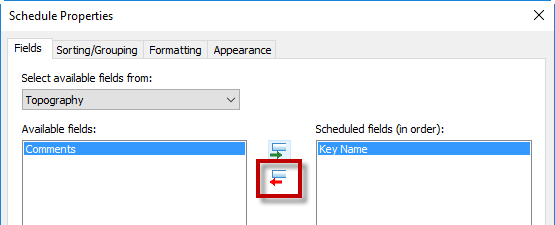
A schedule needs to have at least one parameter. The parameters we create in this key schedule will be the column in the table. Let’s define the parameters.
Click New Parameter.

Revit opens Parameter Properties dialog. The important thing to change in this dialog is the parameter name and type of parameter.
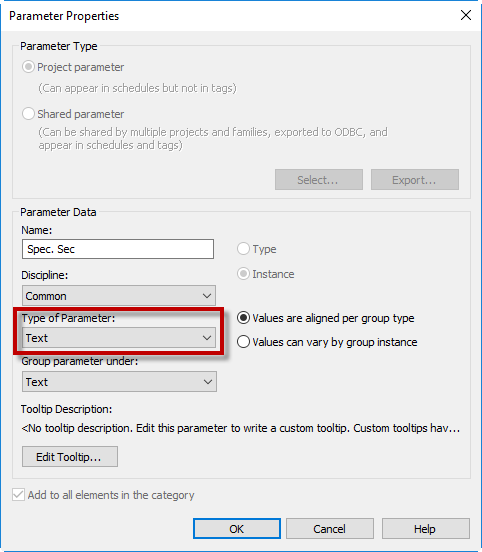
One thing that I want to highlight here, I always use Text as Type of Parameter here. We need to define the type of parameter correctly when we work with families. However, because the table is not related to any families, I keep it simple: all parameters are text. When we need to import the data from Excel, it can be confusing having too many different types.
Below is my completed parameters for my table.
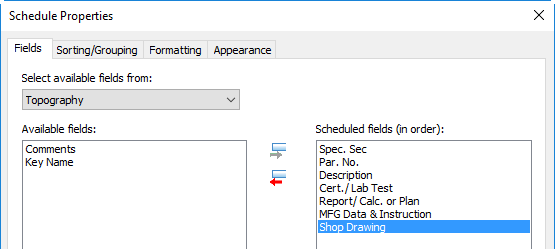
Click OK. Revit opens the schedule.

Filling the Table
The table is ready. Now you can add rows and fill the table. On the Revit ribbon, Modify Schedule/ Quantities tab, Rows panel, click Insert Data Row.
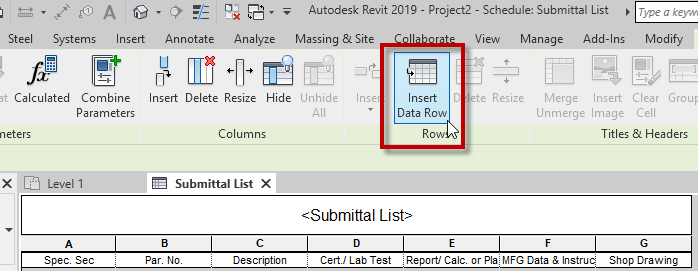
Revit adds a new row. Type the data in the cells. Add more row when you need to add more data.

Importing Data from Excel
Is it possible to import data from A Microsoft Excel table? Yes. But not with Revit native tools. We will cover this in the next article. We will use a plugin. And if you like more challenge, you can use Dynamo.
